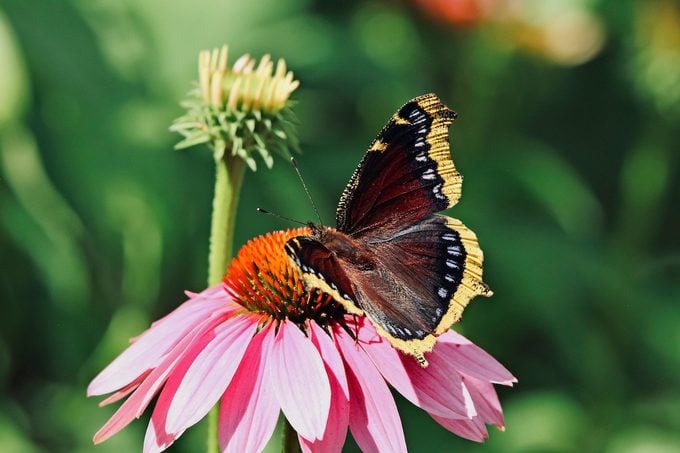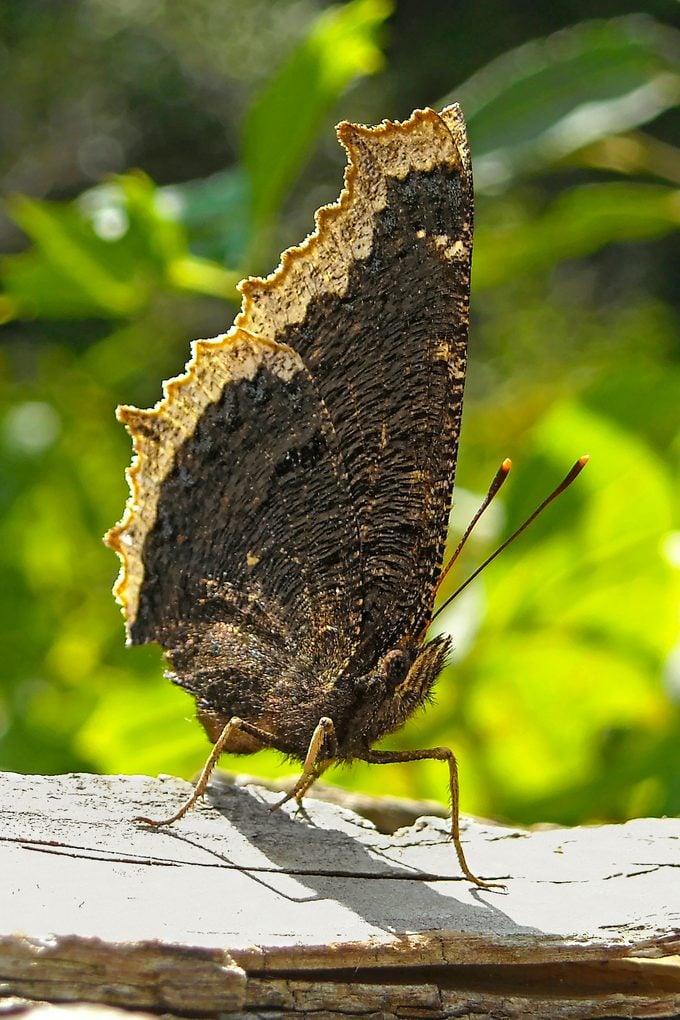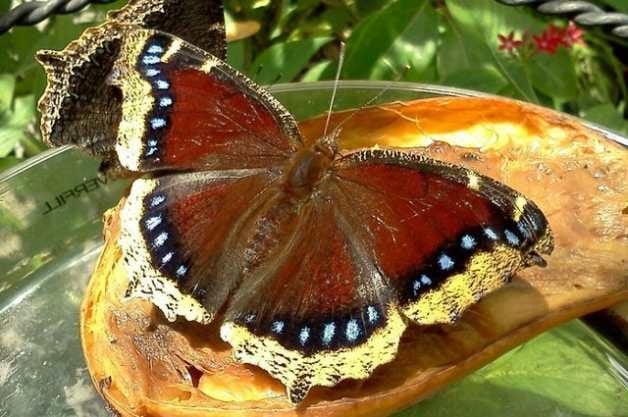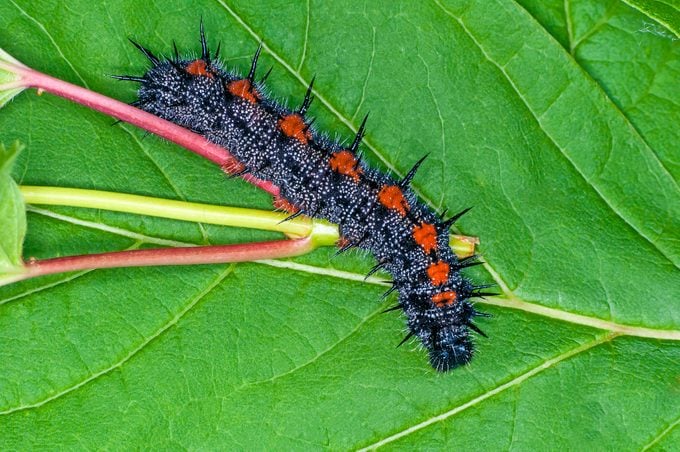Look for a Mourning Cloak Butterfly in Early Spring
Updated: Apr. 18, 2022
Discover where and when to find a mourning cloak butterfly and how to attract them. Also see what their wings and caterpillars look like.
On This Page
Mourning Cloak Butterfly Markings

The appearance of a mourning cloak butterfly typically signals the start for spring for many people. Look for dark maroon wings, yellow speckling on the leading edge and a yellow band on the outer portion of the wing. Also look for blue dots that run along the yellow band. Their wingspan is 2 1/4 to 4 inches.
“I captured this shot of a mourning cloak (above) getting nectar from a coneflower in my garden. I have a fairly large yard with lots of flowers and trees. The mourning cloaks seem to like an area with dead leaves, tree stumps and branch piles,” says Brenda Doherty of Ariss, Ontario.
See 6 common swallowtail butterflies you should know. Plus, here’s how to identify a red-spotted purple butterfly.
Where to Find a Mourning Cloak Butterfly

You can find this big, distinctive butterfly throughout North America—and almost throughout the year. Mourning cloaks can spotted anywhere from northern Canada all the way to Guatemala. They’re also seen in Europe and Asia. A huge plus for butterfly lovers is that mourning cloaks frequent a variety of locations, including banks of streams, woods, parks and suburbs.
While most butterflies pass the winter in the caterpillar, pupa or egg stage, the mourning cloak hibernates as an adult. This means it could come out on warm winter days. Even in the north, it will fly during February thaws, and it makes a stunning sight as it glides through snowy woods.
See where another springtime visitor, white peacock butterflies, can be found.
What Do Mourning Cloak Butterflies Eat?

Unlike some other butterflies, mourning cloaks tend to prefer tree sap and decaying fruit more than flower nectar. Try setting out overripe bananas or other pieces of fruits to attract them–but don’t forget to bring the plate in at night at prevent unwanted pests.
Look for clouded sulphur butterflies in your backyard.
What Does a Mourning Cloak Caterpillar Look Like?

This striking caterpillar’s black body sports large red patches along the top and tiny white dots all over, with dramatic spikes, called scoli, on its back and sides.
Want to attract more pollinators? Plant a caterpillar cafe in your butterfly garden.
Mourning Cloak Butterfly Eggs and Host Plants
Look for the uniquely shaped eggs, which are either light yellow or pale green before eventually growing darker, on the leaves of their host plants: willows, poplars, elms and other trees.
See what a sphinx moth caterpillar and pupa looks like.




















